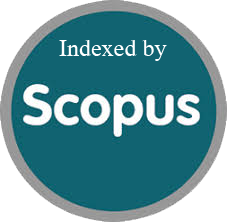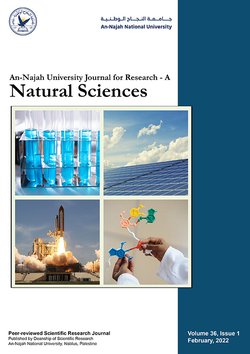Insilco Design, Synthesis and Assessment of the Beta-Lactamases Inhibitory Activity for New 4,4′-Methylenedianiline Monocyclic Azetidinone Compounds
Authors:
Article info
2025-05-17
2025-08-10
2025-08-14
None - None
Keywords
- Beta-lactamases
- monocyclic
- Insilco design
- 4
- azetidinone compounds.
- 4′-methylenedianiline
Abstract
Abstract: Infectious diseases are a leading cause of death globally. While beta-lactam antibiotics remain highly effective treatments, their efficacy is increasingly threatened by microbial beta-lactamase, an enzyme that deactivates these vital drugs. This escalating antimicrobial resistance has been widely reported internationally. Beta-lactamase inhibitors (BLIs), like clavulanic acid, are co-administered with beta-lactams to mitigate this resistance. However, these inhibitors themselves are becoming susceptible to similar resistance mechanisms. This necessitates the urgent discovery of innovative compounds with potent anti-beta-lactamase activities. This study leveraged in silico docking to design and synthesize novel N,N'-diaroyl-4,4'-methylenedianiline monocyclic azetidinone compounds (which resist the Beta-lactamase hydrolysis). Our docking efforts guided the synthesis of ten new compounds, created by reacting selected acid chlorides with synthesized Schiff bases to form the azetidinone ring. We characterized the structures of these synthesized compounds using physical and spectral data. We then biologically tested the monobactam compounds, determining their Minimum Inhibitory Concentration (MIC) against three strains of beta-lactamase-producing Gram-negative bacteria. Their anti-beta-lactamase activities were subsequently compared to clavulanic acid, used as a co-inhibitor with amoxicillin against the same bacterial strains using disk diffusion method. Our results indicate that all synthesized monobactam compounds exhibited beta-lactamase inhibitory actions. Notably, their activity against Pseudomonas aeruginosa and Escherichia coli was stronger than against Klebsiella pneumoniae. The compounds Az2, Az3, Az6, and Az8 having the stronger activities, they representing 14- and 17-mm inhibition zones (moderate activities) against Pseudomonas aeruginosa and Escherichia coli respectively. While all compounds demonstrated varying degrees of anti-beta-lactamase activity, their potency remained lower than that of the standard, clavulanic acid. Notably, chloride substituents showed promising results. these electronegative atoms facilitate stronger interactions with the enzyme's active sites. The nitro groups and halogen atoms appear to enhance the binding of hydrophobic residues within the beta-lactamase active site, thereby strengthening the overall interaction. This study underscores the critical importance of developing new beta-lactamase inhibitors to overcome the pervasive challenge of bacterial resistance.
Insilco Design, Synthesis and Assessment of the Beta-Lactamases Inhibitory Activity for New 4,4′-Methylenedianiline Monocyclic Azetidinone Compounds
المؤلفون:
معلومات المقال
2025-05-17
2025-08-10
2025-08-14
None - None
الكلمات الإفتتاحية
- Beta-lactamases
- monocyclic
- Insilco design
- 4
- azetidinone compounds.
- 4′-methylenedianiline
الملخص
Abstract: Infectious diseases are a leading cause of death globally. While beta-lactam antibiotics remain highly effective treatments, their efficacy is increasingly threatened by microbial beta-lactamase, an enzyme that deactivates these vital drugs. This escalating antimicrobial resistance has been widely reported internationally. Beta-lactamase inhibitors (BLIs), like clavulanic acid, are co-administered with beta-lactams to mitigate this resistance. However, these inhibitors themselves are becoming susceptible to similar resistance mechanisms. This necessitates the urgent discovery of innovative compounds with potent anti-beta-lactamase activities. This study leveraged in silico docking to design and synthesize novel N,N'-diaroyl-4,4'-methylenedianiline monocyclic azetidinone compounds (which resist the Beta-lactamase hydrolysis). Our docking efforts guided the synthesis of ten new compounds, created by reacting selected acid chlorides with synthesized Schiff bases to form the azetidinone ring. We characterized the structures of these synthesized compounds using physical and spectral data. We then biologically tested the monobactam compounds, determining their Minimum Inhibitory Concentration (MIC) against three strains of beta-lactamase-producing Gram-negative bacteria. Their anti-beta-lactamase activities were subsequently compared to clavulanic acid, used as a co-inhibitor with amoxicillin against the same bacterial strains using disk diffusion method. Our results indicate that all synthesized monobactam compounds exhibited beta-lactamase inhibitory actions. Notably, their activity against Pseudomonas aeruginosa and Escherichia coli was stronger than against Klebsiella pneumoniae. The compounds Az2, Az3, Az6, and Az8 having the stronger activities, they representing 14- and 17-mm inhibition zones (moderate activities) against Pseudomonas aeruginosa and Escherichia coli respectively. While all compounds demonstrated varying degrees of anti-beta-lactamase activity, their potency remained lower than that of the standard, clavulanic acid. Notably, chloride substituents showed promising results. these electronegative atoms facilitate stronger interactions with the enzyme's active sites. The nitro groups and halogen atoms appear to enhance the binding of hydrophobic residues within the beta-lactamase active site, thereby strengthening the overall interaction. This study underscores the critical importance of developing new beta-lactamase inhibitors to overcome the pervasive challenge of bacterial resistance.
Since 2019
Cite Score (Scopus): 0.8
Time to First Decision: 5 Days
Submission to Acceptance: 90 Days
Acceptance to Publication: 14 Days
Acceptance Rate: 22%
Call for Papers:
Sustainable Materials and Chemistry for Energy and Environmental Applications
Why should you
Publish With Us?
An-Najah National University
Nablus, Palestine
Nablus, Palestine
- P.O. Box
- 7, 707
- Fax
- (970)(9)2345982
- Tel.
- (970)(9)2345560
- (970)(9)2345113/5/6/7-Ext. 2628
- [email protected]
- EIC
- Prof. Waleed Sweileh
An-Najah University Journal for Research - A (Natural Sciences) by An-Najah University, Nablus, Palestine is licensed under CC BY-NC 4.0

